When you turn on your tap at home, you expect the water that cascades out to be clear, safe, and refreshing. This is what we know as potable water—a vital resource that sustains life and ensures our daily activities proceed without a hitch. Understanding potable water safety isn’t just about knowing it’s safe to drink; it’s recognizing the profound impact that water purity has on your health and the environment. From adhering to stringent drinking water standards to exploring the diverse uses of potable water, every drop harbors a tale of meticulous care and essential function.
It’s no secret that water is life. Yet, the path from a natural source to your glass involves more than just the natural cycle. It requires a blend of technology, regulations, and community engagement to ensure that every sip you take is devoid of harm. Today, let’s uncover the essence of potable water and why its guardianship is an indispensable act of responsibility towards ourselves and our planet.
Key Takeaways
- Recognize the significance of potable water safety for overall health and well-being.
- Learn the criteria that define drinking water standards to ensure water purity.
- Explore the various uses of potable water both in the home and community.
- Understand the impact of meeting the drinking water standards on public health.
- Appreciate the intricate journey from source to tap, highlighting the importance of water purity.
- Stay informed about the treatments and regulations that guarantee safe, potable water.
Understanding Potable Water: Definition and Importance
Amid a growing global water crisis, the definition and importance of potable water are more significant than ever. The sustainability of our future hinges on a robust understanding of clean drinking water — a resource that is alarmingly becoming scarce. As you read on, it will become clear why potable water is a keystone of health and development, and why industries and households alike are grappling with water purification needs to tackle the troubling trends of water pollution impacts.
The Global Necessity for Clean Drinking Water
United Nations reports cast a grim outlook, predicting severe water shortages affecting nations worldwide. Specially affected are developing countries, where access to clean drinking water is a hurdle for countless households. With the climate crisis looming, environmental changes are intensifying the phenomenon of chemical weathering, releasing toxins into our already strained water supplies. This worrying trend underlines an urgent need to address water safety and ensure tap water safety for all.
Comparing Potable Water to Other Water Types
Contrasting potable water with its non-potable counterparts reveals striking differences. The former undergoes stringent treatment processes to eliminate harmful contaminants, whereas the latter may contain substances unfit for human consumption. Here’s an insightful comparison:
| Water Type | Common Uses | Safety for Consumption | Treatment Required |
|---|---|---|---|
| Potable Water | Drinking, cooking, personal hygiene | Yes | Filtration, disinfection |
| Non-Potable Water | Irrigation, industrial processes | No | Varies by use, often minimal |
Essential Functions of Potable Water in Daily Life
Undoubtedly, potable water is essential not just for quenching thirst but for a gamut of daily activities. Its role in promoting hygiene and facilitating culinary practices is paramount, which in turn fortifies public health. Given its critical functions, the demand for innovations in water purification technologies is on the rise, as societies worldwide strive to mitigate the risks associated with contaminated water sources.
In essence, the challenge of securing potable water is a clear reflection of our collective responsibility toward resource management and public welfare. As the conversation on the water purification needs continues, remember that every drop counts in the mission to quench the thirst of generations to come.
What is Potable Water: Clarity on a Critical Resource
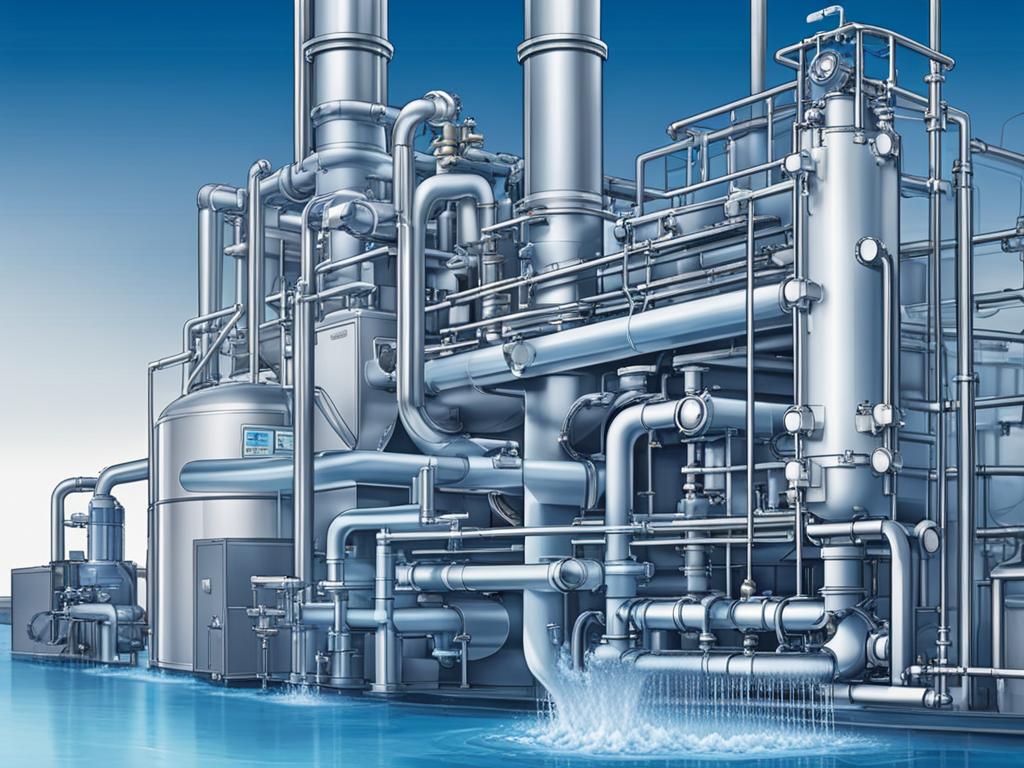
When discussing potable water clarity and safe drinking water, it’s important to recognize that these terms are not just about the clear appearance of water but also about its quality and safety for consumption. Potable water is meticulously treated to meet stringent health standards, safeguarding it from pathogens, pollutants, and various contaminants.
Access to clean water is not an amenity but a necessity, critical to the well-being of communities around the globe. With this understanding, municipalities and regulatory bodies emphasize the need for advanced water treatment methods to ensure consistent delivery of potable water. From large-scale treatment plants to localized purification systems, various technologies are employed to provide you with the safe water necessary for everyday life.
Your local water treatment facilities act as gatekeepers, applying multiple treatment stages to transform raw water into a resource that’s safe for all aspects of daily use. For instance, modern plants utilize sedimentation, filtration, and disinfection processes to achieve the requisite level of water purity. Understanding the methods used in these facilities can offer reassurance about the quality of water flowing through your taps.
| Water Treatment Method | Description | Benefit |
|---|---|---|
| Filtration | Removes particles and turbidity from water using physical barriers | Improves clarity and reduces microbial load |
| Coagulation and Flocculation | Chemicals added cause particles to clump together and settle out | Enhances the effectiveness of filtration |
| Disinfection | Uses chlorine or other disinfectants to kill bacteria and viruses | Provides a safe drinking water supply free of pathogens |
| Reverse Osmosis | A semipermeable membrane filters out salts and impurities | Delivers high-purity water, suitable even in areas of high salinity |
While these water treatment systems are often centralized, innovative solutions for clean water access also exist within homes and businesses. Point-of-use devices such as activated carbon filters, UV purification systems, and countertop distillers can further refine water quality, offering an additional layer of safety.
“Safe drinking water is a fundamental human right, and ensuring its delivery is a testament to our society’s commitment to public health and equality.”
Remember, safeguarding our water resources is a shared responsibility. By staying informed on water treatment methods and advocating for clean water access, everyone can contribute to the preservation and enhancement of our water systems. Every effort towards cleaner water is a step toward a healthier society and a flourishing planet.
Assessing Potable Water Quality: Standards and Regulations
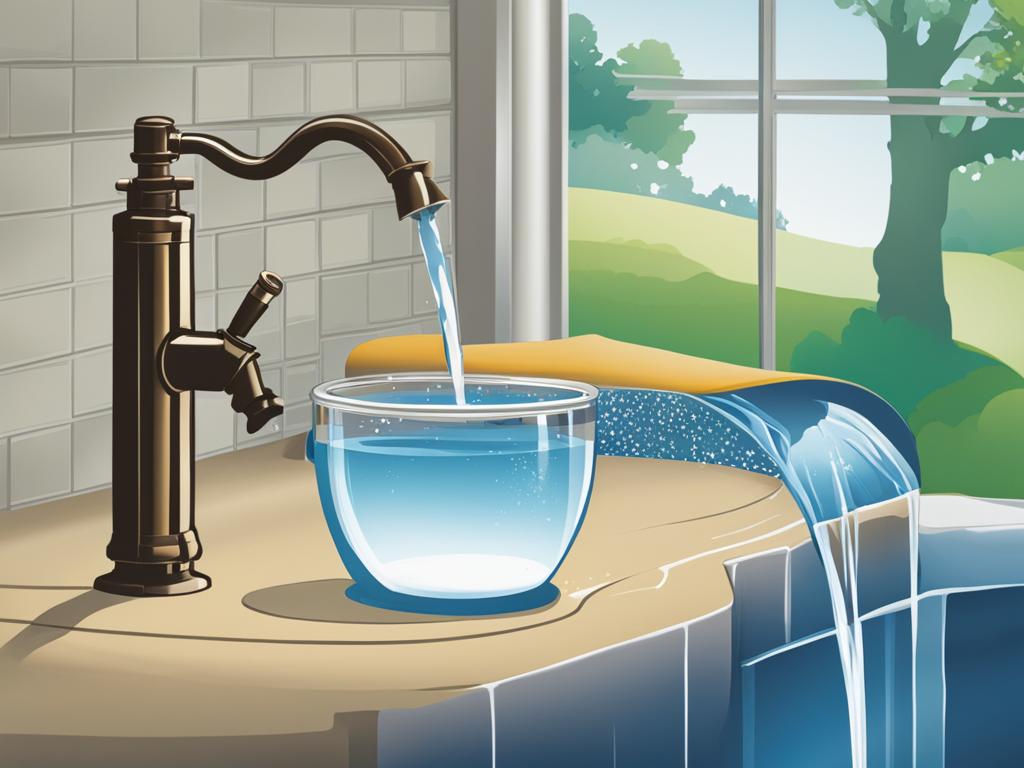
Ensuring the water you drink is of high quality is not just about taste—it’s about health. Across the United States, there are vigilant measures and regulations in place aimed at maintaining the standards necessary for safe consumption. Understanding these protections helps guarantee the sustainability of life-sustaining resources.
Public Health Service Drinking Water Standards
The inception of the Public Health Service (PHS) Drinking Water Standards has been instrumental in defining drinking water quality standards. These guidelines are the baseline for many state and local regulations, ensuring that the water you rely on for day-to-day activities meets rigorous safety criteria.
Regulatory Role of the EPA in Water Safety
The Environmental Protection Agency (EPA) is a key player when it comes to EPA water regulations. Through comprehensive risk assessments and ongoing research, the EPA establishes and upholds the legislation to keep our water safe. Their strategic initiatives are focused on preventing waterborne diseases and promoting public health through clean water supplies.
State and Local Water Quality Approvals
While federal guidelines provide a framework, state and local agencies have a substantial role in the enforcement of safe water legislation. They take the baton from EPA regulations in customizing their approaches to water safety, addressing the unique needs and challenges within their jurisdictions.
| Agency | Role in Water Quality Regulation | Key Contributions |
|---|---|---|
| U.S. Public Health Service | Sets national health-based standards for drinking water | Establishment of baseline standards for all water providers |
| Environmental Protection Agency | Enforces federal regulations and oversees state performance | Research and development of advanced treatment methods |
| State and Local Authorities | Implements and adjusts federal standards to local conditions | Monitoring and responding to local environmental issues |
Treatment Technologies: Ensuring Safety of Drinking Water
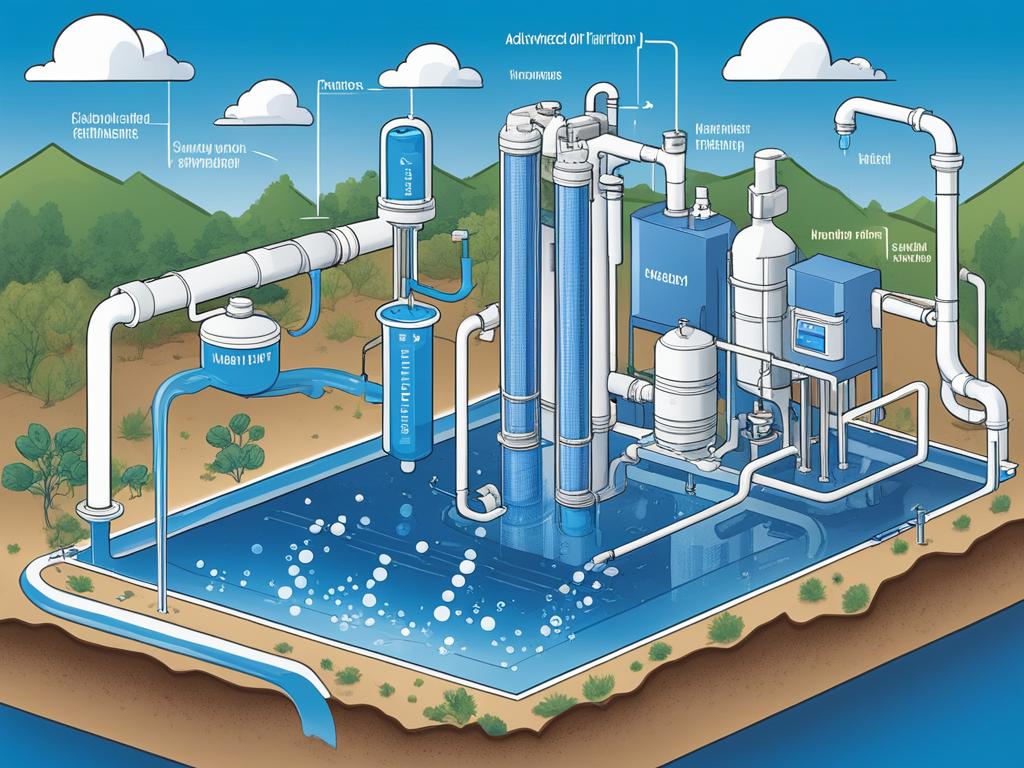
The quest for pristine drinking water has led to the adoption of several advanced water treatment technologies. These systems are not just about delivering water to your tap; they’re about ensuring each droplet is pure, safe, and meets the highest standards of drinking water integrity.
Brackish Water Electrodialysis and Reverse Osmosis
Two of the most powerful methods in combating water impurities are electrodialysis and reverse osmosis, especially in treating brackish water – a type that has more salinity than freshwater but not as much as seawater. By implementing reverse osmosis, water is forced through semi-permeable membranes, leaving behind unwanted salts and contaminants. On the other hand, electrodialysis employs electric currents to move salt ions out of the water through a selective membrane. Both are vital in ensuring the safety of your drinking water.
Maintaining the Integrity of Potable Water in Distribution
It’s one thing to treat water; it’s another to keep it pure as it travels through miles of piping to reach your home. Water filtration systems are employed throughout this journey to uphold drinking water integrity. These are not just barriers but sophisticated guardians that actively remove any contaminants that might intrude during distribution.
Advanced Filtration Systems for Contaminant Removal
As our need for clean water evolves, so does the technology. State-of-the-art water filtration systems serve as the bedrock of modern water treatment technologies. They are armed with cutting-edge membrane technology capable of removing the minutest of pollutants, thereby safeguarding your water from a range of threats including pathogens, heavy metals, and chemical runoff. Each sip of water is a testament to the incredible journey through these filtration processes.
Risks of Water Contamination: Sources and Effects
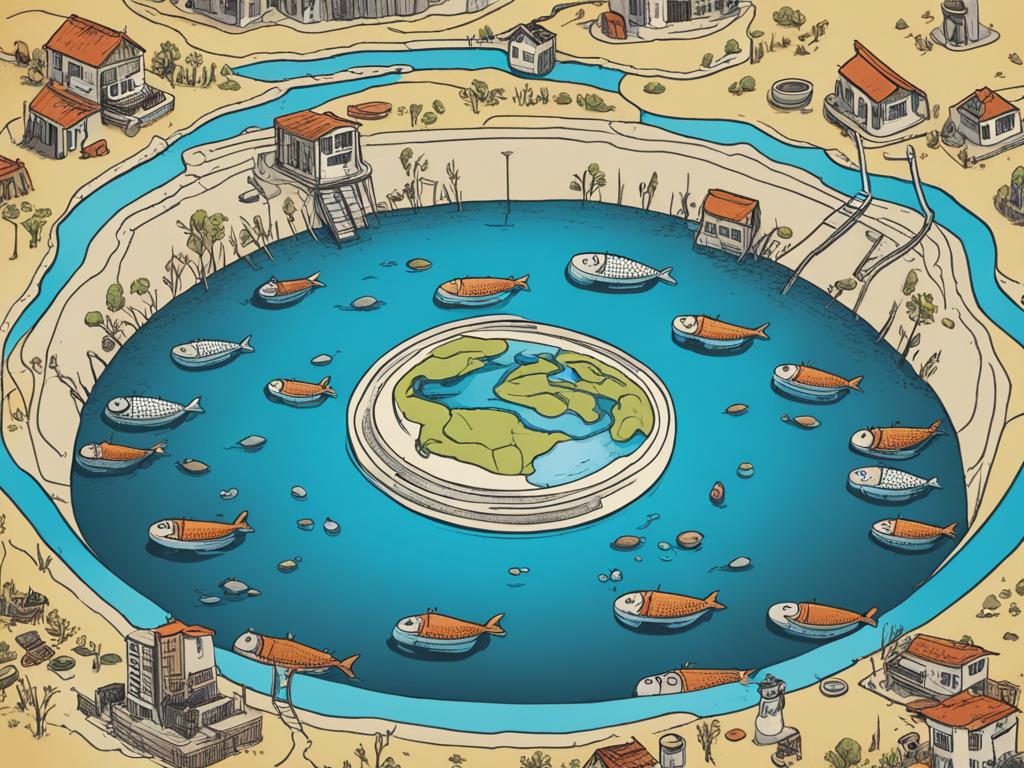
Understanding the risks of water contamination is crucial for safeguarding public health and environmental integrity. Contaminants entering our water supply can stem from a wide variety of activities and natural processes – each presenting unique challenges to water safety.
Anthropogenic and Geogenic Pollutants
The impact of human activities, or anthropogenic sources, such as industrial discharges, agricultural runoff, and improper waste disposal, on water quality, cannot be overstated. These actions often release pollutants in water including pesticides, nutrients, and heavy metals, posing significant health risks. Additionally, natural or geogenic sources, such as the erosion of mineral deposits, contribute to water pollution by introducing substances like arsenic and fluoride into water systems.
Effects of Global Warming on Water Quality
Global warming effects are exacerbating water contamination issues. As temperatures rise, the likelihood of chemical reactions in water increases, leading to the dissolution of harmful compounds. One such consequence is the heightened dissolution of CaCO3, initiating a cascade of complex chemical processes that degrade water quality and make treatment more difficult.
Water Safety Concerns in Developing Countries
In the realm of developing country water crises, the situation is particularly bleak. Inadequate infrastructure and limited resource management capabilities prevent effective treatment and distribution of clean water. The overlap of poverty, poor sanitation, and lack of educational programs compound these water safety concerns, leaving populations vulnerable to diseases linked to contaminated water supplies.
The interconnectivity of ecosystems and public health systems underscores the need for a comprehensive approach to managing water contamination risks. Tackling the root causes of this contamination is essential for creating a sustainable and secure water future for all.
Practical Uses of Potable Water Beyond Consumption
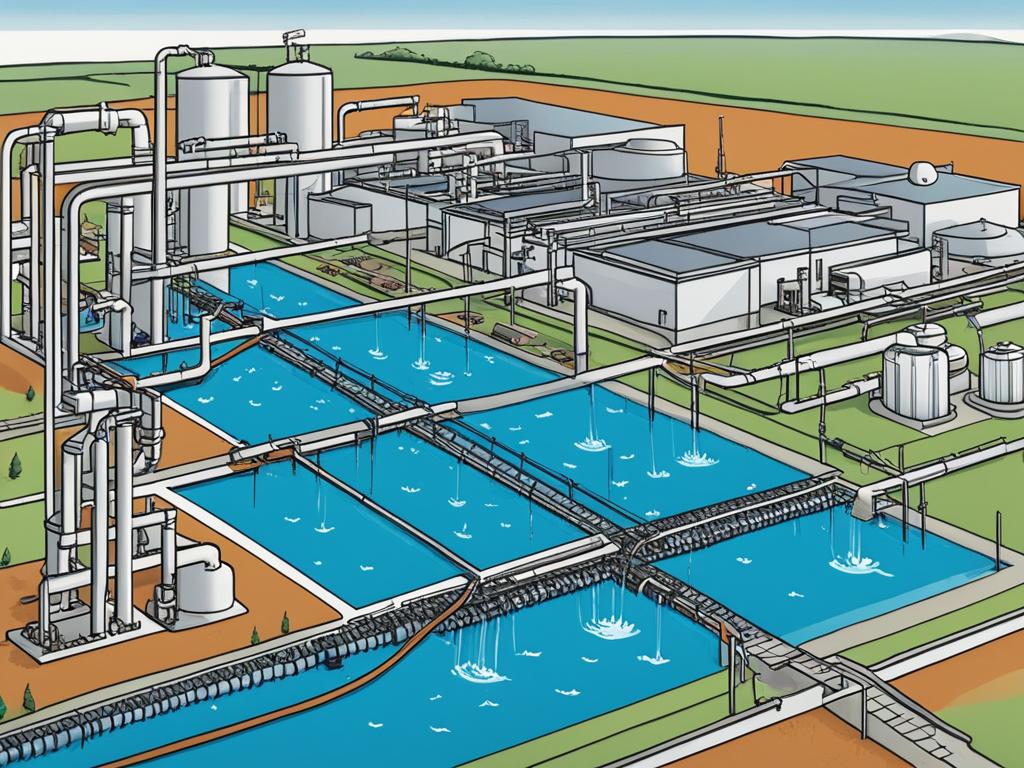
When you think of potable water, it’s likely that drinking comes to mind first. However, this essential resource plays a significant role in many other areas too. Let’s dive into the diverse potable water applications that impact everything from industry operations to public health.
Water usage in plants goes beyond mere hydration for staff. It is critical for processes such as cooling and conditioning of equipment. In many industrial applications, consistent quality of water ensures the smooth and safe execution of manufacturing processes. Meanwhile, sanitation facilities rely on potable water to maintain a hygienic environment. This is pivotal in settings like hospitals and food processing factories where cleanliness is paramount.
Moving over to water treatment in industries, here the standards are especially stringent. The water used for treatments must not only be safe to drink but also meet high purity levels to prevent contamination of products and ensure the integrity of complex machinery.
Take a look at the table below that highlights some key industries and how they utilize potable water:
| Industry | Usage | Benefits |
|---|---|---|
| Pharmaceuticals | Product composition, equipment sterilization | Purity in product, adherence to health standards |
| Agriculture | Irrigation, livestock drinking water | Healthier crops, reduced disease in animals |
| Food & Beverage | Cleaning, ingredient in products | Consumer safety, quality assurance |
| Healthcare | Patient care, sterilization of instruments | Control of hospital-acquired infections, patient wellbeing |
As you can see, potable water serves as the backbone of various critical operations within these sectors. It’s not just about quenching thirst—it’s about keeping our societies running in a clean, safe, and sustainable way. So next time you take a sip of that clear, refreshing water, remember the unseen roles it plays in our daily lives and wider industries.
Fulfilling the Demand for Potable Water: Municipal and Personal Responsibility
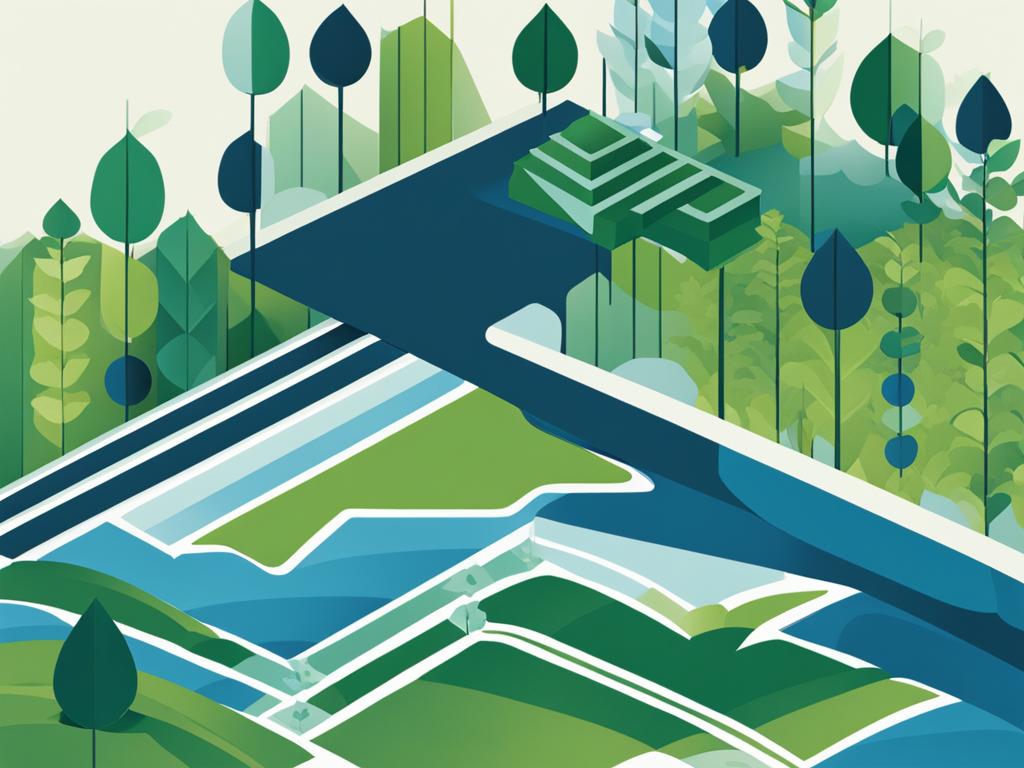
As our world becomes increasingly thirsty for potable water, water demand management becomes a critical component of how we sustain our future. Municipal water treatment systems and personal water safety strategies both play pivotal roles. As a member of this global ecosystem, let’s dive into how you can contribute to, and benefit from, the sustainable efforts in place to manage our most precious resource.
Municipal Water Treatment Systems Overview
Municipal water treatment systems are the backbone of public-private water responsibility. They provide large-scale solutions that ensure the water flowing from your taps is clean and safe. Techniques like filtration, sedimentation, and disinfection are typically employed after sourcing water from lakes, rivers, or aquifers. These systems are designed to meet strict regulations for potable water, assuring its safety for you and your community.
Strategies for Personal Potable Water Treatment
Despite municipal efforts, in areas where water scarcity is common or during emergency situations, having your own personal water safety strategies in place is invaluable. This may include point-of-use filters, boiling, or chemical treatment methods. Personal vigilance in treating and conserving water not only ensures safety but also lessens the burden on communal supplies, playing a part in comprehensive water demand management.
Responsibility for Safe Water in Public and Private Sectors
Providing safe potable water is a shared responsibility. Public institutions manage large-scale municipal water treatment systems, whereas individuals and households play a crucial role through personal usage and treatment choices. Together, they form a synergistic defense against water shortages and contamination. By accepting mutual responsibility—and with the help of governmental oversight and regulation—a sustainable water future is possible.
Protecting Potable Water: Preservation and Pollution Prevention
Ensuring the purity of your drinking water is not just an individual concern; it’s a collective responsibility that demands diligence and sustainable water practices. In the face of growing environmental challenges, potable water protection has become an imperative action, aiming to prevent contaminants from degrading our most precious resource. Whether it’s through adopting water-efficient appliances or supporting policies favoring eco-friendly industrial processes, your choices can significantly impact water conservation efforts. Remember, every drop saved is a step toward sustainability!
Pollution prevention requires a vigilant approach to managing waste and runoff that could end up in water supplies. By promoting pollution prevention measures such as proper disposal of hazardous materials and advocating for stricter regulations on industrial discharges, you contribute to maintaining the quality of water sources. Furthermore, engaging in water preservation strategies like rainwater harvesting or landscape irrigation using gray water can make a sizable difference in the demand for potable water. These practices help preserve the environment for future generations while ensuring we have access to clean water today.
Indeed, the journey toward sustainable water practices is ongoing and requires a united front. Educating yourself and your community about the importance of water conservation and the threats posed by water pollution fosters a culture of awareness and action. By integrating simple, yet effective, water-saving techniques into your daily routine, you become a guardian of this vital lifeline. Let’s all commit to actions that safeguard our potable water—because a secure water future is a shared responsibility that starts with every one of us.
FAQ
What is potable water and why is it important for public health?
Potable water is water that is safe for human consumption, hygiene, and cooking, meeting strict safety standards to be free from harmful contaminants and pathogens. It’s essential for public health as it prevents waterborne diseases and supports overall well-being.
How does potable water differ from other types of water?
Unlike non-potable water, which is not safe for human use, potable water has been treated to eliminate pollutants and contaminants, ensuring it meets drinking water standards enforced by agencies like the EPA for safety and purity.
What are some common uses of potable water in everyday life?
Beyond drinking, potable water is used for cooking, personal hygiene, such as washing hands and bathing, and cleaning, ensuring a high standard of living and reducing the risk of health issues related to water contamination.
Which authorities regulate the quality of potable water?
The quality of potable water is regulated by various agencies, with the EPA playing a significant role in the U.S., alongside state and local authorities following Public Health Service drinking water standards.
What treatment technologies are used to make water potable?
Technologies such as brackish water electrodialysis, reverse osmosis, and advanced filtration systems are used to remove contaminants, ensuring the water’s safety for consumption and maintaining its integrity throughout the distribution network.
What are the risks associated with contaminated water sources?
Contaminated water sources can lead to public health emergencies, environmental damage, and widespread diseases. Pollutants like petroleum hydrocarbons and heavy metals from anthropogenic activities and naturally occurring substances can pose significant health risks.
How is global warming affecting potable water quality?
Global warming increases chemical weathering and the release of harmful substances into water supplies such as phosphates and trace metals, exacerbating the challenges of producing and maintaining high-quality potable water.
Why is potable water critical in industrial settings?
In industrial plants and factories, potable water is necessary not just for consumption, but also for maintaining safety standards, such as operating emergency showers and eyewash stations, which require water that meets drinking water specifications.
How do municipalities and individuals work together to ensure a sustainable potable water supply?
Municipalities implement water treatment systems, while individuals in water-scarce areas may employ personal treatment methods to make water potable. It’s a collaborative effort to secure safe and sustainable water supplies.
What steps are being taken to protect and preserve potable water sources?
Protecting potable water involves pollution prevention strategies, sustainable water practices, and raising public awareness about the importance of water conservation. These concerted efforts contribute significantly to ensuring ongoing access to safe drinking water.

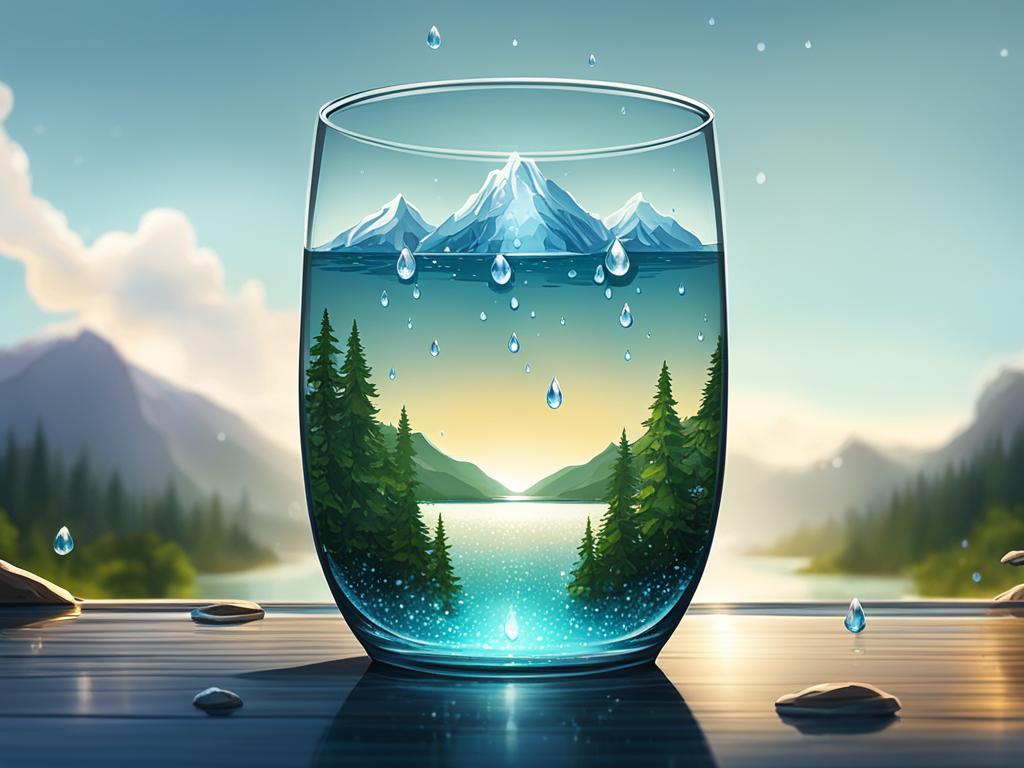
Leave a Reply
You must be logged in to post a comment.